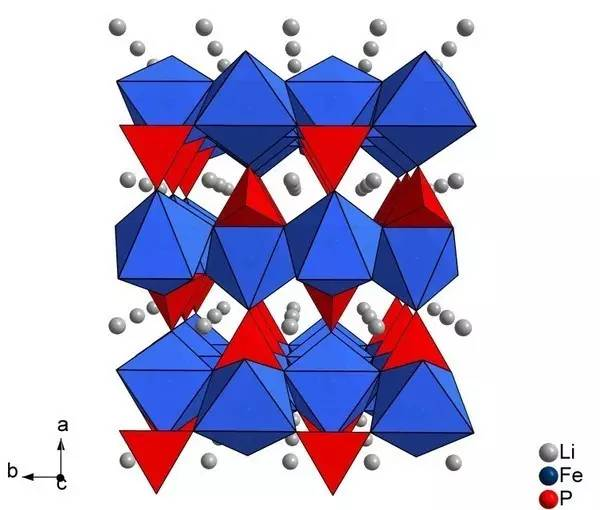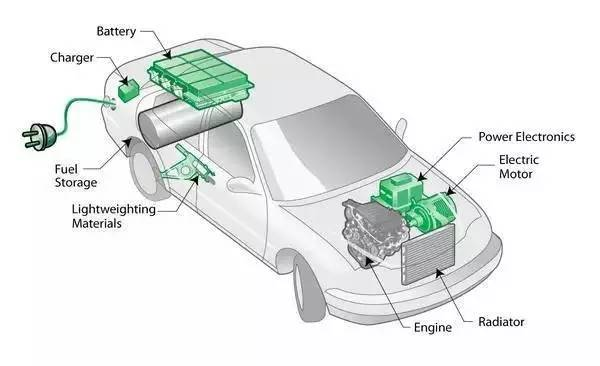Lithium iron phosphate battery: refers to a lithium ion battery that uses lithium iron phosphate as the positive electrode material. Its characteristics are that it does not contain precious elements such as cobalt, the price of raw materials is low, and the content of phosphorus and iron are abundant in the earth, so there will be no supply problems. Its working voltage is moderate (3.2V), large capacity per unit weight (170mAh/g), high discharge power, fast charging and long cycle life, and high stability in high temperature and high heat environment.
Advantages Compared with the more common lithium cobalt oxide and lithium manganese oxide batteries currently on the market, lithium iron phosphate batteries have at least the following five advantages: higher safety, longer service life, and no heavy metals and rare metals ( The cost of raw materials is low), fast charging is supported, and the operating temperature range is wide.
Disadvantages Lithium iron phosphate has some performance defects, such as low tap density and compaction density, resulting in lower energy density of lithium-ion batteries; material preparation costs and battery manufacturing costs are higher, and battery yield is low, consistent Poor sex; poor product consistency; intellectual property issues.
Ternary polymer lithium battery: A lithium battery using lithium nickel cobalt manganese oxide (Li (NiCoMn) O2) ternary cathode material as the cathode material. According to Ouyang Minggao of Tsinghua University, the "ternary" materials mentioned in this survey refer to the "ternary power battery" in the usual saying that the positive electrode is ternary and the negative electrode is graphite. In actual R&D applications, there is another kind of positive electrode that is ternary and the negative electrode is lithium titanate. It is usually called "lithium titanate". Its performance is relatively safe and its life is relatively long. It does not belong to the common term "ternary". material."
Advantages The ternary lithium battery has high energy density and better cycle performance than normal lithium cobalt oxide. At present, with the continuous improvement of the formula and the perfect structure, the nominal voltage of the battery has reached 3.7V, and the capacity has reached or exceeded the level of lithium cobalt oxide batteries.
Disadvantages Ternary material power lithium batteries mainly include nickel-cobalt lithium-aluminate batteries, nickel-cobalt-manganese lithium batteries, etc. Due to the unstable high-temperature structure of nickel-cobalt-aluminum, the high-temperature safety is poor, and the pH value is too high, which may cause the monomer to swell. This leads to danger, and the current cost is relatively high.
Lithium iron phosphate battery: mature but not enough
Lithium iron phosphate electrode material is currently the safest cathode material for lithium-ion batteries. In addition, its cycle life can reach more than 2000 times, and it can be used for standard charging (5 hours rate). It can reach 2000 cycles. In addition, due to the mature industry And the price technology threshold and the decline of technology brought about, many manufacturers will adopt lithium iron phosphate batteries out of various considerations. It can be said that the rise of new energy vehicles has an inseparable relationship with lithium iron phosphate batteries.
However, lithium iron phosphate batteries have a fatal shortcoming, that is, poor low-temperature performance, even if they are nanometerized and carbon coated, this problem has not been solved. Studies have shown that a battery with a capacity of 3500mAh, if it is operated at -10°C, after less than 100 charge-discharge cycles, the power will decay sharply to 500mAh, which is basically scrapped. This is indeed not a good thing for our country's vast territory and the comprehensive national conditions where there are indeed more low temperatures in winter.

In addition, the cost of material preparation and the cost of battery manufacturing are relatively high, the battery yield is low, and the consistency is poor, which is also an important reason why many pure electric vehicles cannot reach the nominal value. Therefore, we can see that many domestic new energy vehicles (whether pure electric or hybrid electric), or some relatively cheap new energy vehicles, will choose lithium iron phosphate batteries for different reasons. It can be said that the use of lithium iron phosphate batteries has an indelible foundational role for the mass production and promotion of new energy vehicles.
In contrast, the ternary polymer lithium battery does have better characteristics than the lithium iron phosphate battery, but why its development has been hindered?
Ternary polymer lithium battery: a restless future
Ternary polymer lithium battery refers to a lithium battery that uses lithium nickel cobalt manganate (Li (NiCoMn) O2) as the cathode material. The precursor product of the ternary composite cathode material is nickel salt, cobalt salt, and manganese salt. As raw materials, the ratio of nickel, cobalt and manganese inside can be adjusted according to actual needs. Ternary lithium batteries have greater energy density, but their safety is often questioned.
The reason for this is that even though these two materials will decompose when they reach a certain temperature, the ternary lithium material will decompose at a lower 200 degrees, while the lithium iron phosphate material is about 800 degrees. And the chemical reaction of the ternary lithium material is more intense, it will release oxygen molecules, the electrolyte will burn rapidly under the action of high temperature, and a chain reaction will occur. To put it simply, ternary lithium materials are more likely to catch fire than lithium iron phosphate materials. However, it should be noted that we are talking about materials, not batteries that have become finished products.

Because of the potential safety hazards of ternary lithium materials, manufacturers are also working hard to prevent accidents. According to the easy pyrolysis characteristics of ternary lithium materials, manufacturers will do a lot of overcharge protection (OVP), over discharge protection (UVP), over temperature protection (OTP), and over current protection (OCP). effort. Therefore, the spontaneous combustion incident should consider whether the manufacturer's functions in these links are in place, rather than simply giving up food due to choking.
So what is the current usage of these two batteries? Let's focus on a set of data. In November last year, the installed capacity of electric buses with lithium iron phosphate batteries accounted for 64.9%, and the installed capacity of ternary lithium batteries was only 27.6%. On the contrary, in the pure electric passenger car market, the installed capacity of ternary lithium batteries in November last year exceeded 76%.
Different types of batteries for new energy vehicles: unified requirements

After talking about the battery, Junlee believes that in the case of new energy vehicles, it is necessary to briefly introduce the role of batteries in vehicles. After all, consumers who buy pure electric vehicles are still a minority, and more friends are concerned about hybrid vehicles. Hybrid vehicles can be strictly classified into three types: ordinary hybrid vehicles, plug-in hybrid vehicles and extended-range hybrid vehicles.
The arrangement of battery capacity in the above three cars from small to large happens to be an ordinary hybrid vehicle <plug-in hybrid vehicle ≤ range extended hybrid vehicle. The battery of an ordinary hybrid electric vehicle is not rechargeable, and the battery is used for starting and rapid acceleration; the battery of a plug-in hybrid electric vehicle has an increased capacity and rechargeable on the basis of an ordinary hybrid vehicle battery, and has better acceleration capabilities and fuel economy Ability; while the engine of the extended-range hybrid vehicle is used to drive the motor to generate electricity, and it is more inclined to pure electric vehicles.

These three hybrid vehicle models have their own advantages and disadvantages. At this stage, the main force is also ordinary hybrid and plug-in hybrid. It is precisely because the characteristics of the three hybrid electric vehicles have in common for battery life and working environment, no matter what mode of hybrid electric vehicle is purchased, consumers should pay attention to relevant parameters, such as battery material and operating environment. And best working conditions. At the same time, manufacturers should strictly control battery quality and related safety settings during the design process to ensure safe and efficient use.
The key to the development of new energy vehicles is whether their experience can be comparable to or even surpassing traditional internal combustion engine vehicles, and whether they have better advantages in the purchase and after-sales links. In my opinion, the key to the development of new energy vehicles is also the key to the development of batteries that plagues mobile digital products. How to ensure that battery technology can meet the growing needs of consumers under safe conditions is not only the pursuit of automotive technology-related industry personnel, but also scientific research workers in the entire field.

